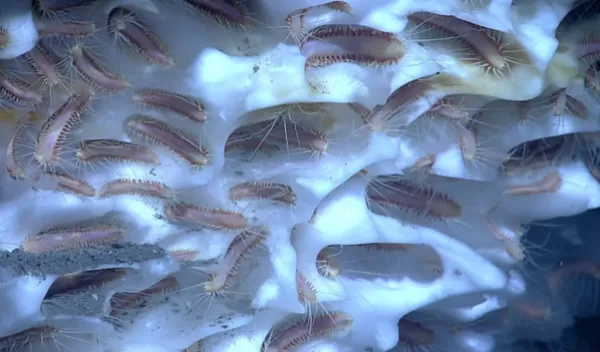
Study on methane in deep-sea sediments shows small releases happen more often than thought
A team of scientists led by a Brown University researcher has developed a new method for monitoring when deep-sea methane deposits convert to gas and rise toward the seafloor in amounts that were previously too small to detect.
The U.S. National Science Foundation-supported research, published in Earth and Planetary Science Letters, shows that fossils of single-cell organisms called benthic foraminifera in the order Miliolida have a unique ability to serve as resources. These organisms can record the location and the timing of when crystalized methane goes through a process known as methane hydrate dissociation, when ice-like methane found beneath the seafloor transforms into gas and rises upward.
The researchers have shown through an analysis of 372 Miliolida fossils that these previously unrecorded dissociation events have occurred in the Bay of Bengal in the northern Indian Ocean for the past 1.5 million years, but they were too small to detect through other signs of hydrate dissociation. The analysis shows the dissociation events have been largely driven by increasingly warming waters in the region.
The findings underscore the effects climate change can have on ancient methane deposits and show that the hydrates transition from their solid ice-like phase to gas more often than scientists thought.
"If you look at other sites around the area we studied, the records show only two methane dissociation events in the last million years," said Steven Clemens, lead author of the study. "Here, we see it pretty much everywhere we look, particularly during times when Earth's climate was in a warm phase. It's clear that methane is cycling a lot more rapidly and more often between its ice and dissolved phases than we could previously detect."
The researchers said the study is the first to document that three species of Miliolida foraminifera — Pyrgo spp., Quinqueloculina spp. and Spiroloculina spp. — are sensing small-scale dissociation events. Analysis of other types of foraminifera the scientists collected during a previous expedition to the Indian Ocean showed that unlike Miliolida, they do not detect these smaller-scale dissociation events.
